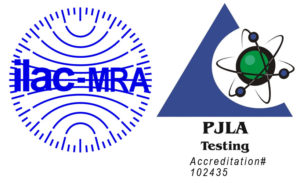Sources of Particulates
According to AAMI1, there are two broad sources of particulates associated with vascular medical devices:
i. Particulates from materials and manufacturing processes. Raw materials that may undergo operational processes such as grinding, polishing, and cutting may also be a source of particulates.
ii. Particulates from the environment. Airborne particles and particles shed by personnel are controlled by HEPA-filtered air and appropriate garb and personnel practices.
Capturing Particulates in Liquids
Regardless of the source, particulate matter that is shed by intravascular stents and stent-grafts can pose a significant clinical risk to the patient.
Dynatek’s patented Coating Durability Testers (chronic and acute) utilize optional in-line filter housings and filter membranes (Figs. 1 and 2) to capture particulate matter during durability testing and acute phase testing of stents, stent-grafts, catheters and balloons. The CDT-5 Coating Durability Tester can accommodate five optional capture filter housings, the CDT-20 can accommodate 20 and the Acute Particulate Tester (APT) can mount up to five. These capture filter housings contain a membrane with an appropriate pore size designed to capture particles shed by stents during durability and acute phase testing. The housing includes a silicone O-ring for sealing the filter.
In addition to chronic testing of coated stents and stent-grafts, Dynatek also offers Acute Particulate testing of these vascular devices.
Particulates shed by vascular devices when negotiating a tortuous pathway in Acute Phase testing are also captured by these filters.
ISO/AAMI/ASTM/FDA recommend the counting, sizing and capture of particulate matter shed by vascular devices to assess the particulate shedding potential of the device. Dynatek’s CDTs and APT offer the ability to capture particles shed by the vascular device in real time with the use of these filters. After testing on the CDT or APT has been completed, the filter housing can be sent to you, with the particle-laden membrane seated inside the filter housing; alternatively, we can send the filter to our SEM vendor for counting and/or EDX analysis of the captured particulate matter.
SEM analysis gives you a confirmation of particle counts/sizes vs. the counts/sizes obtained by the particle counters in the CDTs and APT. Elemental identification of particulate matter via EDX analysis offers valuable information that can be used to source the particulates shed during testing.
References
1. AAMI TIR42:2010. Evaluation of particulates associated with vascular medical devices.





